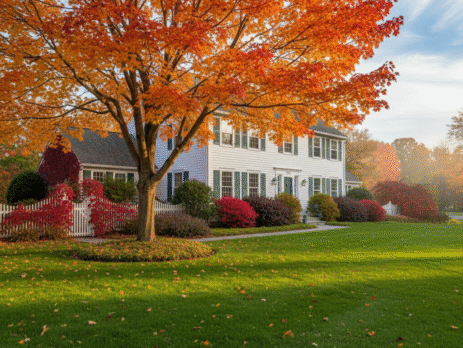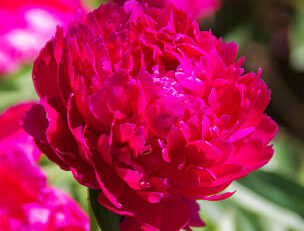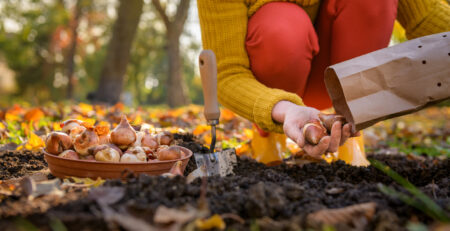Fall Lawn Care: Overseeding, Fertilizing & Prepping for Spring
Why October Is Prime Time for Lawn Work That Pays Off Next Year
As fall colors blanket the North Shore, your lawn still has work to do — and October is the perfect time to do it. Cooler temperatures and consistent rainfall create ideal conditions for repairing summer stress, strengthening roots, and setting the stage for a vibrant lawn next spring. With a little effort now — and the help of Espoma Organic Lawn Care products — you can create a greener, healthier lawn that’s better for your family, pets, and the environment.
🌱 Step 1: Overseed to Fill Bare Spots Naturally
Fall is the best season for seeding because warm soil and cool air promote rapid germination and root development.
-
Mow low before overseeding to allow new grass seed to reach the soil.
-
Rake lightly to remove thatch and loosen compacted areas.
-
Apply a high-quality seed, such as Espoma Organic All-Season Grass Seed Mix, formulated for dense, resilient turf.
-
Keep soil moist, watering daily for 1–2 weeks until new seedlings establish.
🌾 Step 2: Feed the Soil — Not Just the Grass
Healthy lawns start with healthy soil. Fall feeding helps roots absorb nutrients before winter dormancy and strengthens the lawn’s natural defenses against cold and stress.
-
Use Espoma Organic Fall Winterizer Lawn Food, a slow-release, all-natural formula that promotes deep root growth and soil health.
-
Apply in mid to late October while the ground is still warm.
-
Water thoroughly to help nutrients reach the root zone.
Unlike synthetic fertilizers, Espoma’s organic formulas feed the soil microbes that create long-term fertility — improving the structure and resilience of your lawn naturally.
🍂 Step 3: Keep Things Clean and Breathing
Fallen leaves left on your lawn can trap moisture and block sunlight. Keep your grass breathing by:
-
Raking or mulching leaves regularly.
-
Aerating compacted soil to allow air, water, and nutrients to circulate.
-
Avoiding heavy traffic on wet or newly seeded areas.
🌤️ Step 4: Set the Stage for a Greener Spring
Taking care of your lawn now is an investment in next year’s beauty. A lawn enriched with organic nutrients and strong roots will green up faster, resist weeds naturally, and require less maintenance come spring.
❓FAQ
Q: When is the best time to overseed in Zone 6a?
A: Late September through mid-October — when daytime highs are cool and the soil is still warm enough for seed germination.
Q: Can I seed and fertilize at the same time?
A: Yes! Use Espoma Organic Lawn Starter along with grass seed to promote quick root establishment and healthy early growth.
Q: How late is too late to fertilize in the fall?
A: Once the ground freezes or daytime temperatures stay below 50°F, hold off. Apply your fall feeding before Thanksgiving for best results.
Q: How often should I water new grass seed?
A: Water lightly every day until seedlings are 2–3 inches tall, then switch to deep watering a few times a week.
🍁 Quick Takeaway
Fall is the most important season for lawn care — and Espoma Organic products make it easy and earth-friendly. By overseeding, feeding the soil, and maintaining your lawn in October, you’ll enjoy a greener, thicker, and naturally healthy lawn next spring.
🌿 Local Insight from Nunan’s Florist & Garden Center
At Nunan’s in Georgetown, MA, we know fall lawn care is all about building strong roots. Our team can help you choose the right Espoma Organic products for your soil type and growing conditions — so your lawn can thrive naturally. Stop by this fall and give your lawn the care it deserves before winter sets in.















